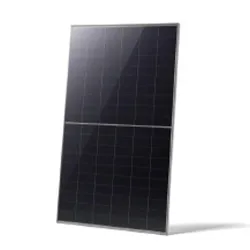Typical Dimensions of Solar Panels for Residential Use
Understanding Typical Solar Panel Sizes for Home Use
In recent years, the adoption of solar energy has gained significant momentum, driven by a global push for sustainability and cost-effective energy solutions. Homeowners are increasingly looking to install solar panels to harness the sun’s energy, reduce utility bills, and contribute to a greener planet. However, one of the critical factors in planning a solar installation is understanding the size of solar panels typically used for residential purposes. This article will explore the typical solar panel sizes, their dimensions, how many panels a homeowner might need, and factors that influence these decisions.
Typical Solar Panel Dimensions
Most residential solar panels on the market today come in a standard size of approximately 65 inches by 39 inches (1.65 meters by 1 meter). This size allows for a power output ranging from 250 to 400 watts per panel, depending on the specific technology used and the manufacturer's specifications. The most common types of solar panels are monocrystalline, polycrystalline, and thin-film, with monocrystalline panels often providing higher efficiency and greater power output from a smaller surface area.
Monocrystalline panels are favored for residential use due to their higher efficiency ratings, which can exceed 20%. This means homeowners can generate more electricity even in limited space, making them ideal for roofs with limited square footage. In contrast, polycrystalline panels tend to be slightly larger, with efficiencies normally between 15-17%, and may require more space to achieve similar output levels.
Calculating the Number of Panels Needed
The number of solar panels a homeowner needs depends on several factors, primarily energy consumption, roof space, solar panel output, and the location's sunlight availability. On average, a typical home in the United States consumes around 877 kWh per month, which means a solar system size of about 6 kW to meet this demand.
Assuming a solar panel output of 300 watts, a homeowner would need roughly 20 panels to produce 6 kW (6000 watts / 300 watts per panel = 20 panels). However, this estimate can vary based on the geographic location, with sunnier regions requiring fewer panels compared to areas with less sunlight.
Factors Influencing Solar Panel Size and Number
typical solar panel size for house

Several factors influence how many solar panels a home may need and their dimensions
1. Roof Size and Orientation The size, shape, and orientation of a roof play a vital role in determining how many solar panels can be installed. South-facing roofs typically collect more sunlight than roofs facing east or west. Furthermore, roofs with obstructions like chimneys or vents may offer limited space for panel placement.
2. Energy Needs Each household’s energy consumption varies greatly, influenced by the number of occupants, appliances used, and lifestyle habits. Performing an energy audit can help determine the exact energy needs and, consequently, how many solar panels are required.
3. Solar Panel Efficiency As mentioned earlier, different types of solar panels have varying efficiency rates. Higher efficiency panels, while generally more costly, can be beneficial for homes with limited roof space.
4. Local Climate and Sunlight The amount of sunlight a location receives dramatically affects solar energy production. Regions with frequent cloudy weather may require more solar panels to meet the same energy demands as homes in sunny areas.
5. Future Expansion Homeowners should also consider future energy needs, especially if they plan to add more electrical devices or electric vehicles. Opting for a slightly larger solar system now may save costs down the road.
Conclusion
In summary, the standard size of residential solar panels is roughly 65 by 39 inches, with each panel producing between 250 to 400 watts depending on the type. While a typical home may require around 20 panels, several factors such as roof space, energy consumption, and local climate play crucial roles in determining the actual number needed. Homeowners looking to invest in solar energy must weigh these considerations to ensure they design a system that meets their unique demands while effectively utilizing available space. As solar technology continues to advance and prices decrease, more homeowners will likely embrace this sustainable energy source, contributing to a cleaner and more efficient energy future.
-
String Solar Inverter: The High-Efficiency Solution for Smart Solar EnergyNewsJul.14,2025
-
Revolutionizing Rooftop Energy with the Power of the Micro Solar InverterNewsJul.14,2025
-
Power Independence with Smart Off Grid Solar Inverter SolutionsNewsJul.14,2025
-
On Grid Solar Inverter: Powering the Future with Smart Grid IntegrationNewsJul.14,2025
-
Monocrystalline Solar Panels: High-Efficiency Power for the Future of Clean EnergyNewsJul.14,2025
-
Bifacial Solar Panel: A Smarter Investment for Next-Generation Energy SystemsNewsJul.14,2025







